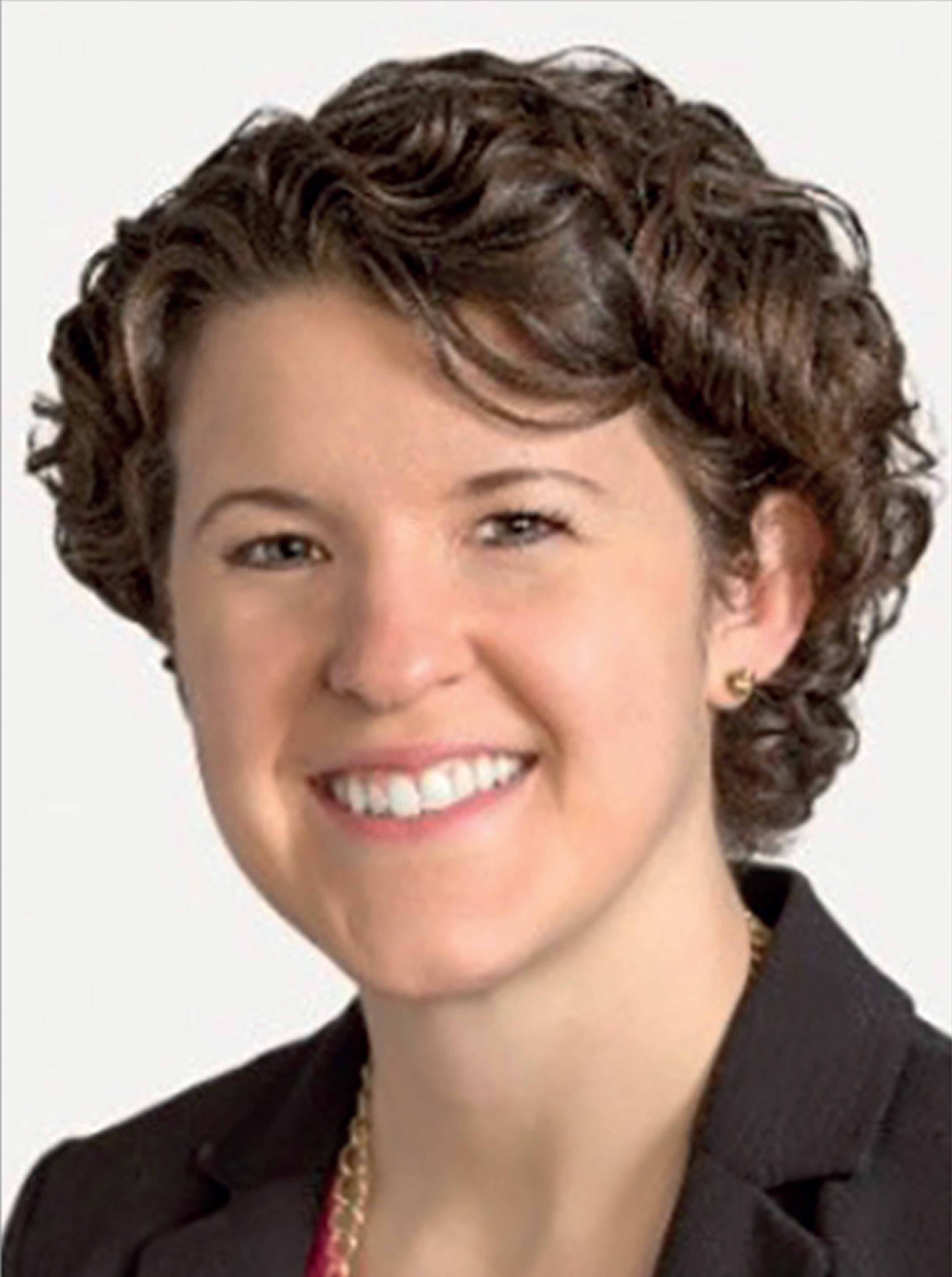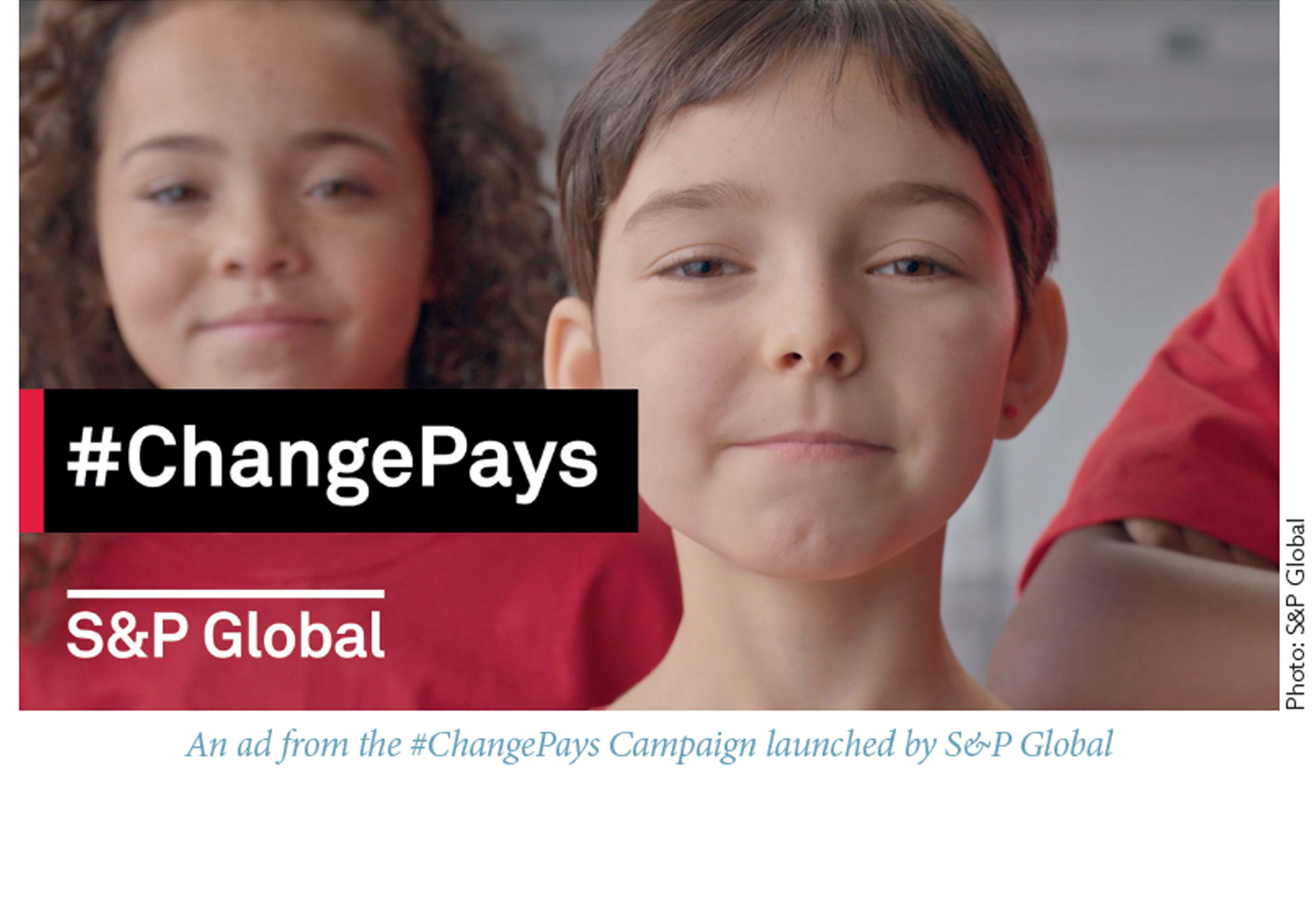
 Doug L. Peterson is President and CEO of S&P Global Inc. Tara Powers is Communications Director of S&P Global Inc. You may follow S&P Global Inc. on Twitter @SPGlobal.
Doug L. Peterson is President and CEO of S&P Global Inc. Tara Powers is Communications Director of S&P Global Inc. You may follow S&P Global Inc. on Twitter @SPGlobal.
The dynamism of our global economy is truly unprecedented. And, in an environment like today’s, change is far from the exception—it is the rule.
Our data and analytics show that one change in particular can have a direct impact on creating a more equitable international system, ultimately driving sustainable development across the world. That change is working to increase women’s economic participation and foster an inclusive economy, which has the potential to drive growth and positively impact all global citizens.
It is a change that is already in the making. S&P Global has written extensively about the role of women in global markets and the economy.
The latest research in our Women, Work and Wealth series is designed to explore the inclusive economic benefits of increasing women’s participation in the workforce. Our analysis posits that the financial future truly is female—and that women are increasingly a market force with the power to shape economic trends worldwide.
Active in the Workforce
When women are active participants in the workforce, they have more money with which to invest, and we see that in the form of a measurable market impact. With an increase in American female labor force participation alone, our research shows that the acceleration to American GDP growth could add $5.87 trillion to global market capitalization over the next 10 years.
That’s just the potential impact of the increased participation of women in the United States—what are the implications when we think about female financial empowerment on an international scale?
Women’s control of the world’s investible wealth is on the rise, possibly reaching $72 trillion worldwide by 2020, according to Boston Consulting Group. In light of this, it is critically important to consider the approach women take to their finances, and the issues they care about most.
In that vein, to understand the unique experiences and concerns of women, S&P Global partnered with SurveyMonkey to conduct a survey of more than 30,000 people in the 11 countries with the largest stock markets (by market capitalization). This survey examines aspects of financial preparedness, investment behaviors, and impressions of the stock market between women and men.
Women’s preparedness and participation in each of those markets varies, and this collaborative effort is an attempt to reveal interesting insights about cultural and economic factors representing women’s realities. However, one thing is clear: Whatever comes next comes down to women.

Understanding Differences
The results present a stark contrast between men and women on a variety of such issues; differences that serve to highlight the ways in which women are often less financially secure and less optimistic about their economic futures. Understanding these differences—and what causes them—allows us to take practical steps toward inclusive economic growth that benefits everyone.
Our research captured perspectives from the United States, United Kingdom, Germany, Switzerland, Canada, Australia, France, South Korea, China, India, and Japan. One thing these markets have in common is a quantifiable gender discrepancy, with men having a greater overall economic advantage over women.
Switzerland, Australia, France, Germany, and the United States have the greatest gender discrepancy, where the share of women in poor financial shape is 10 to 18 points higher than men. Asia represents a bright spot in this dim picture. South Korean, Indian, and Chinese women are just as likely to feel fiscally prepared as their male counterparts.
It’s perhaps unsurprising, then, that women were broadly found to be more wary of markets than their male counterparts. A surprisingly high percentage of women in almost all countries said that if they found themselves without work they would only be able to sustain their current standard of living for a short time.
In 10 of the countries we surveyed, anywhere from 32 to 45 percent of women said they would have to make some lifestyle adjustments within one month (if not immediately) if they were suddenly unemployed or unable to work—the lone exception being China, where only 16 percent of women said they would have to do so. In every case but one, the percentages were significantly higher among women than men.
Our research also looked at sentiment and trends across regions, based on the 11 economies included in the study.
First, turning to North America, we find that in the United States, the world’s largest economy, women hold an estimated 42 percent of wealth, yet a clear majority are pessimistic about their personal finances. Three in five American women rate their current financial situation as “fair,” at best—with more than one in five saying they are in “poor” shape. The same goes for women in Canada.
Sadly, the picture is even bleaker for millennial women across North America, with more than two-thirds of respondents saying they were in “poor or fair” shape financially. This helps either explain why only 26 percent of American women invest directly in the financial markets or through mutual funds, despite 41 percent saying that now would be a good time to do so. Even when the market offers the potential for economic prosperity, women are generally in less of a secure position to take the risks associated with investing.
Despite similar sentiments regarding financial status, Canadian women were far more risk-tolerant than American women, with 40 percent of women surveyed investing in the stock market. This investment advantage exists at all levels of education, even for women without college degrees. Over half of college-educated Canadian women invest in stocks or mutual funds, which is more than 10 percentage points higher than the share of women who are college graduates in the United States (42 percent).
Interestingly, regardless of their qualms, a solid majority of women in both countries believe they are in charge of their financial wellbeing. Highlighting this confidence, more than two-thirds say their own actions—such as working hard, saving, and investing carefully—are more important than events largely beyond their control, such as what happens to the economy, an unexpected illness, or the fate of financial markets.
Across the Atlantic, worries weigh on female investment habits in Europe as well. The Old Continent has experienced a noticeable rise in populist attitudes over the last decade. With financial crises and demographic changes causing significant uncertainty, fear has often manifested in backlashes against traditional governmental and financial institutions.
In a rebuke of those populist attitudes, British women have greater trust in traditional financial institutions than women in France, Switzerland, and Germany—yet that trust does not necessarily translate into actual investment. Only around 20 percent of women in the four largest EU markets think it is a good time to invest. This is particularly telling, given that solid majorities of women in each country (figures range from a low of 57 percent in Germany to a high of 70 percent in France) believe they are in charge of their financial wellbeing.
As the most populated region in the world, Asia is a mixed bag when it comes to the economic outlook across the region. Among the Asian countries surveyed, perceptions of personal finances are worst for South Korean and Japanese women. Financial preparedness is highest in China, and Chinese women are most likely to think that it is a good time to invest in the market (44 percent). Meanwhile, in Japan, 87 percent of women consider themselves in poor shape financially, the most pessimistic outlook of the countries surveyed, and only 21 percent of Korean women and 16 percent of their Japanese counterparts say it is a good time to invest.
Interestingly, roughly two-thirds of women in China and South Korea say their own actions are more important for their financial wellbeing than events largely beyond their control. Less than half (46 percent) of Japanese women feel they are in the driving seat in this regard—by far the lowest percentage in any of the countries we surveyed.
These sentiments must be taken in tandem with women’s ranking of “jobs and the economy” among the issues that matter most to them. In China, 30 percent of women identified this as their primary focus, more than 10 percentage points higher than other concerns, such as healthcare and education. And 59 percent of women in South Korea rank it as their most pressing issue. It is also critical in Japan, where 29 percent of women rank it as their top concern—nearly as high as the next two issues (the environment and education) combined.
And of all the markets surveyed, Asian women are most likely to keep their finances separate from their partners, an independence that speaks to the growing autonomy and power women hold in the marketplace.
In India, survey findings capture the opportunities and anxieties of the country’s burgeoning middle-class. Across gender, there is comfort regarding the present moment, with 92 percent of women and 88 percent of men rating their current financial situation as “excellent-to-fair” (significantly more than the global average of 79 percent).
Bucking global trends, Indian women (71 percent) are almost as likely as Indian men (73 percent) to consider now a good time to invest in the stock market. That optimism corresponds with high trust in financial institutions, with at least 80 percent “somewhat” trusting information from these institutions, and 32 percent showing “a lot,” of trust. These numbers are higher than in any other country surveyed.
But the financial future is tense, causing angst among 83 percent of women and 87 percent of men. With social security as a national lacunae and lifespan increasing at a healthy clip, sustaining current lifestyles will require long-term job market and wage growth that would enable more planning for retirement.
With India set to become the world’s most populous country—and its ratio of elderly citizens on track to double by 2050—maintaining current lifestyles will require a vibrant, sustainable labor market and wage growth that would enable more provisioning for education and healthcare. This is reflected in the policy priorities of both men and women in India, who ranked “jobs and the economy” as their most pressing causes of concern (25 percent), closely followed by education (24 percent) and healthcare (21 percent).
The Female Paradox
The paradox: optimism and investment confidence may be high, but their continuation is contingent on income security, which, in turn, is far from assured. Little wonder that 32 percent of respondents believe their financial wellbeing depends on events mostly beyond their control, such as economic development, the stock market, or an unexpected illness. At the same time, aggregate wealth among Indian women falls shy of the other countries we surveyed, with women in this country controlling just between 20 percent and 30 percent of total wealth, according to Credit Suisse’s 2018 Global Wealth Report.
When viewed through a global prism, the survey results show a stark contrast between genders on a variety of issues. These differences shed light on the ways in which women often feel less financially secure and less optimistic about their economic futures. Paradoxically, women feel a greater sense of conviction when it comes to betting on themselves and using their economic strength to exercise their values.
Understanding these differences, and their causes, can help countries, companies, and individuals take practical steps toward the sort of inclusive economic growth that will benefit everyone.
Consider, too, that women are generally more likely than men to gauge a company’s environmental and social impact when making an investment decision or buying a product. In every country but one, these considerations were even more of a factor when it came to investment decisions. As more and more women are becoming owners of capital, do we have the environmental, social, and governance (ESG) solutions, or investments, that align with their values? With women holding, by some estimates, as much as 40 percent of the world’s total wealth, it seems clear that the increasing focus of fund and asset managers on ESG issues is here to stay.
Transforming Economies
Women are transforming financial markets and economies across the globe. Our survey results clearly demonstrate that their risk tolerance, confidence, and willingness to invest will impact our world for years to come.
As we consider the relationship between women’s sense of their own financial wellbeing and their agency over that wellbeing, it is imperative that we think about the capacity for women to enter and succeed in the workplace. Women’s contributions in the workplace are significant, and too often undervalued or underrepresented. As part of our research focus, as well as our broader corporate responsibility commitment, S&P Global is seeking to grow greater awareness of, and advance the discussion around, the need for greater workforce inclusivity and its proven benefits to global economies.
In that vein, earlier this year we launched an inspiring campaign called #ChangePays. It leverages our data and insights to show that greater participation of women in the workplace leads to stronger, healthier and more advanced economies. It is vital that we learn where we have made progress and where there is still a long way to go.
For women—and the world—to realize the fullness of their economic potential, we need to demonstrate the power of change. Our research contends that if women entered, and stayed in, the workforce at a pace in line with Norway, the American economy would be $1.6 trillion larger than it is today. Continued reductions in U.S. workplace gender inequalities would potentially add five to 10 percent to U.S. nominal growth in just a few decades, helping to offset the currently expected strain on growth from retiring Baby Boomers.
And increased labor participation among women would have knock-on effects that, while perhaps not quantifiable, are no less significant. For example, women are more likely than men to invest a large portion of their household income in their children’s education—and so, as those children grow up, their improved status presumably benefits society and the economy.
Increasing the knowledge and understanding of women’s investing power and market impact lets countries, companies and individuals take practical steps to develop inclusive economic growth in their areas of influence. We know there is no singular path forward to address this question—actions aimed at driving inclusivity must take into account culture and geography, as well as local laws and policies.
#ChangePays
We invite global business, policy and thought leaders to join S&P Global in raising awareness around the benefits of greater workplace inclusivity. At S&P Global, we have worked to strengthen our talent acquisition practices globally to ensure that our hiring practices attract the widest, most diverse possible talent pool. We are also increasing our investment in career development programs for the next generation of female and diverse leaders, as well as establishing career re-entry programs to create a pipeline for those looking to return to the workforce.
Through the work of the S&P Global Foundation, we have also established partnerships with organizations like MicroMentor that actively address the global gap in STEM and digital skills, particularly for women, which will be critical in the workforce of the future. This is great progress—but, at the same time, we understand our responsibility to continue these efforts to implement positive changes inside our own walls.
An investment in women is truly an investment in all of us. Our hope is that #ChangePays will serve as a convening force for action to create a more inclusive economy and promote a more sustainable future.







